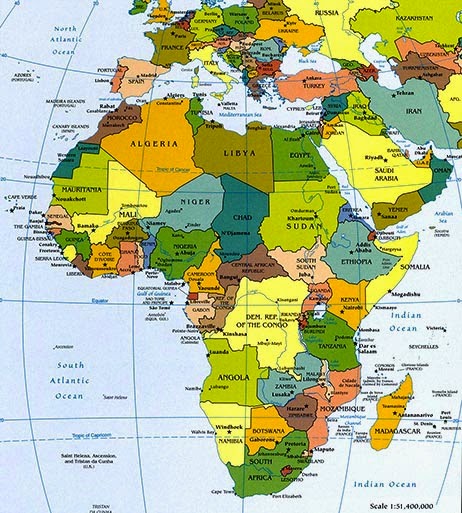I found some additional information on medicines used to heal in Madagascar, as well as some more specific information regarding the healing of children and expecting mothers. I collected the following information from the same source I referred to for my previous blog. In this this blog, however, I will be summarizing more of what I learned regarding medicinal healing, rather than spiritual healing, which was the main topic of my last blog.
The same Ombias that Amy met in Southern Madagascar was not only able to heal using spiritual methods, but by using medicinal plants as well.
He often makes a solution of water and a special plant. Patients who suffer from seizures may drink it, and it will heal from the inside.
He can also help patients who have knee problems or suffer from a stomach ache or problem with the head.
He actually used some of his healing methods on Amy's camera man, Tibi, because he was sick. Tibi was experiencing discomfort in his chest and back, as if he was getting a cold.
The Ombias began by mixing water with the bark shavings of a stick. A different green plant had been soaking in the water prior to it being used in the solution. The Ombias gave this solution to Tibi to drink.
The Tromba massaged oils into Tibi's stomach. Tibi soon began to feel better, and his health improved over the course of the day.
The Ombias was kind enough to share a few other methods he uses, on a regular basis, to heal patients.
He heats plants over fire and lays them on a patient's chest to help their cough. He uses an oil for inflammation in the mouth. He rubs a plant on charcoal to produce a substance which assists in child birth.
Amy and her crew went on several other expeditions in Madagascar. One of these expeditions took place in a small village in Southern Madagascar...off the South-Eastern Coast.
The team meets another healer, Enazy, who specializes in healing children. The gift to heal children had been given to him from Creator. His knowledge had been passed on from generation to generation, which initially stemmed from his ancestors (who once lived among medicinal plants in the forests). His methods are
not spiritually based. Enazy is not an Ombias
or a Tromba.
He is able to heal babies, which have problems with their head, by bathing him in a tea bath made from a special plant. The healer washes the head with the solution before returning them to their mother.
This method is used to cure
many types of ailments.
He is able to cure cases of diarrhea as well.
Enazy has even delivered most of the children in his village. (Thinking back to the other video I saw...I wonder if Enazy has ever used that substance, made by rubbing a plant on charcoal, to assist in delivering babies in his village?).
He has many other treatments for various illnesses, including malaria. He creates a tea from a special plant, and the resulting solution is drank by the affected person.
Infections can be cured, as well, if a special tea is drank by the infected patient.
Enazy also heals wounds. The wound is washed with tea made from a plant and the wounded area is dried. Nothing is applied in bandage form to the wound, however.
(Unfortunately little information was provided ,by Enazy, on the name of many plants explained above, from the video).
I was able to find records of natural medicines which Mi'kmaq use to heal children and expecting mothers. I will focus on four types of plants.
Most medicinal Mi'kmaq plants are boiled into teas and drank to cure ailments, just like they do traditionally in Madagascar!
In photo below: plamuipkl, peppermint
Peppermint is great to help a fever. You can eat it plain/raw or steep it into a tea. It will work best if drunken 3 times each day. It is also known to be good for your nerves, distress, or tiredness. It will also restore your blood.
The photo below: maqtewe'kewey, black root
Black root is steeped and used in a baby's eyes if they are sore. It is also a good tonic for women to consume before
and after giving birth to a baby. You can even steep and gargle it to cure flu, or sore throat.
The photo below: wkwamulamunipkek, trillium
Trillium helps a baby's colic. It also helps teething babies. To prepare a solution for consumption you may grate a small amount and mix it into the baby's bottle.
In the photograph below: wisawtaqji'jkl, golden threads
Golden threads are good for fertility. You may pick it and drink it as a tea. It is also used as an eyewash and to clean wounds. It can be used to moisturize the skin or heal cold sores.
"“Child Healer” (Madagascar)." Healing Seekers. Healing Education Foundation, n.d. Web. 28 Oct. 2014. <http://www.healingseekers.com/child-healer-madagascar/>.
"Kwe Mist Wen." Unamaki Institute of Natural Resources. Unamaki Institute of Natural Resources, 24 June 2011. Web. 28 Oct. 2014. <http://www.uinr.ca/news-articles/kwe-mist-wen/>.
"Madagascar Expedition." Healing Seekers. Healing Education Foundation, n.d. Web. 28 Oct. 2014. <http://www.healingseekers.com/expeditions/madagascar-expedition/>.
"Madagascar: Ombias Healer, Tibi's Stomach Treatment, and Sacred Seeds." Healing Seekers. Healing Education Foundation, n.d. Web. 28 Oct. 2014. <http://www.healingseekers.com/madagascar-ombias-healer-tibis-stomach-treatment-and-sacred-seeds/>.
Photo acknowledgements:
http://www.healingseekers.com/two-new-videos-an-upcoming-photo-exhibit-and-linda-carlisle-and-rita-rice-ledford-join-the-team/
http://www.frontiercoop.com/learn/hs_peppermintsavvy.php
http://robynbukowski.weebly.com/indigenous-influences-on-holistic-medicine.html
http://flowerinfo.org/trillium-flowers




















